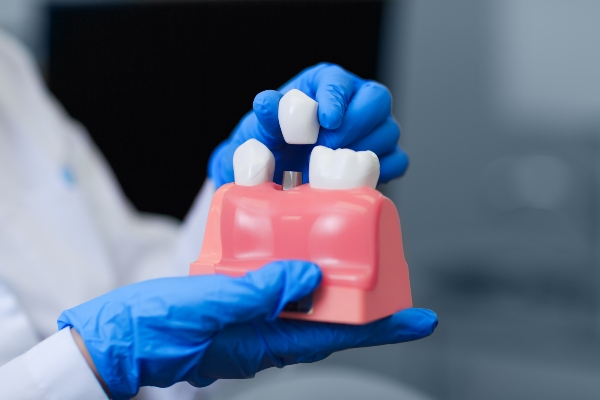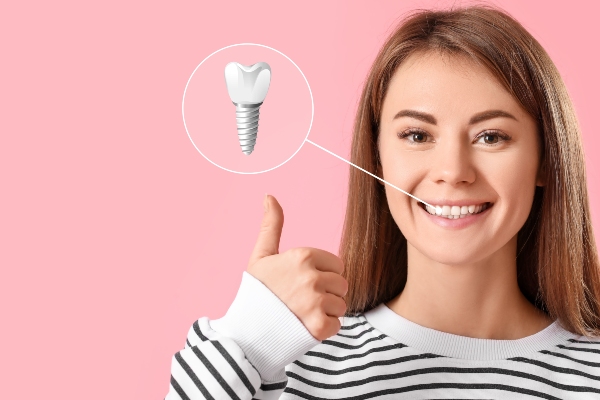Is Invisalign the Right Teeth Straightening Option for You?

Are you considering Invisalign® as an option for straightening your teeth? This popular teeth straightening method, also known as clear aligners, is becoming increasingly popular thanks to its convenience and comfort. In this blog post, we will discuss the advantages and disadvantages of clear aligners and how to decide if it is the right teeth-straightening option for you. So if you are wondering if clear aligners are the right choice, read on to learn more.
What is it?
Clear aligners are an increasingly popular alternative to metal braces for people seeking a straight smile. Unlike metal braces, which use brackets and wires to gradually move your teeth, Invisalign uses a series of clear plastic aligners that fit over your teeth and gradually shift them into the correct position.
Each set of aligners is customized to fit your unique teeth and gradually moves your teeth a little bit more each week. The aligners are typically worn for around 20 to 22 hours a day and are switched out every two weeks for a new set.
Clear aligners are a great option for those who want to straighten their teeth without the hassle and appearance of traditional metal braces. Due to their inconspicuous nature and ability to be taken off when necessary, clear aligners are significantly more convenient than metal braces. However, it is advisable to discuss them with a dentist or orthodontist prior to utilizing them, as it may not be a viable solution for everyone's individual circumstances.
How does it work?
Invisalign is a dental procedure that utilizes transparent aligners to slowly and gently shift teeth to the desired arrangement. Unlike traditional metal braces, clear aligners are practically invisible and removable. The aligners are custom-made for your teeth using advanced 3D imaging technology, ensuring a comfortable and precise fit.
Your initial appointment will involve a consultation with a specialist to evaluate your oral health and use a 3D scan to create a custom plan. This blueprint will map out the precise movements of your teeth and the amount of time necessary for treatment.
After this, you will receive your first set of aligners. Every few weeks, you must exchange your current aligners for a new set as your teeth gradually begin to move into the desired position. You must wear these aligners for approximately 22 hours each day, removing them only when necessary to consume food or liquids or to brush your teeth.
Treatment usually lasts between six months to two years, depending on the severity of the misalignment. During this time, you will need to visit your provider every six to eight weeks for a progress checkup and to receive your next set of aligners.
Overall, clear aligners are a relatively straightforward treatment that offers a convenient and discreet way to straighten your teeth. However, it is important to discuss your dental needs and expectations with your provider to ensure that clear aligners are the right teeth straightening option for you.
The pros and cons
Like any other dental procedure, clear aligners also have their own set of pros and cons. It is important to weigh both the advantages and disadvantages before opting for clear aligners.
Advantages
Nearly Invisible: The biggest advantage of clear aligners is that it is nearly invisible. You can wear them all day without anyone noticing them, which is a big plus for people who are conscious about their appearance.
Comfortable: Clear aligners are comfortable to wear, unlike traditional braces, which may cause irritation and discomfort. It is made of smooth plastic that does not irritate the gums and the teeth.
Removable: Clear aligners are removable, which means you can take them off when you eat, brush, or floss. This makes maintaining good oral hygiene easier, which is crucial for overall dental health.
Disadvantages
Cost: The cost of clear aligners can differ based on the complexity of required dental work, often being more expensive than traditional braces.
Compliance: To achieve optimal results, it is essential to wear the aligners for about 22 hours per day. Compliance can be challenging for some people who may forget to wear them or take them out more frequently.
Not Suitable for Everyone: Clear aligners may not be the best option for complex orthodontic cases or those who have significant gaps or bite problems.
Requires Discipline: Wearing clear aligners requires discipline, as it involves maintaining a strict oral hygiene routine and wearing the aligners as recommended.
The bottom line
Deciding whether or not clear aligners are the right teeth-straightening option for you ultimately comes down to your individual needs and preferences.
If you are looking for a discreet option that will not interfere with your appearance or daily routine, clear aligners are a great choice. It is comfortable, effective, and removable, so you will not have to make any drastic changes to your lifestyle.
However, if you have more severe dental issues that require more complex treatments, traditional braces or other orthodontic options may be more suitable.
Consulting with your dentist or orthodontist is the ideal approach to take when deciding the most beneficial course of action for your circumstances. They can assess your dental needs, discuss the benefits and drawbacks of various treatment options, and help you make an informed decision that works best for you.
Request an appointment here: https://metrosmiles.com or call Metro Smiles Dental at (718) 841-9591 for an appointment in our Forest Hills office.
Check out what others are saying about our dental services on Yelp: Invisalign in Forest Hills, NY.
Recent Posts
Considering Invisalign®? Modern-day dentistry has allowed for the evolution of many types of teeth straightening options. Clear aligners are offered by a number of brands, with Invisalign® being the most popular. However, individuals who are considering teeth straightening may also consider braces, which are known to be the standard method for correcting crooked teeth, crowded…
If you are dealing with teeth insecurities, Invisalign® can help you with that. Invisalign is a newly developed method of orthodontic treatment. It is an aligner system that steps away from traditional dental braces that use semi-permanent metal brackets and wires. Invisalign offers a more comfortable, convenient, and effective way to straighten your teeth.Invisalign only…
Invisalign® only became popular a few years ago as a discreet method of straightening the teeth. Due to the benefits of this option, more people are inquiring about how it works. If you are curious about the Invisalign process, this article covers that, including what to expect before, during and after treatment.Patients who are interested…
Invisalign® aligners have given a lot of people worldwide a straighter smile. This type of orthodontic treatment helps straighten teeth without the use of traditional metal braces. It is a great option for teens and even adults who need their teeth straightened. Aligners are very popular for many reasons, including the fact that they are…


